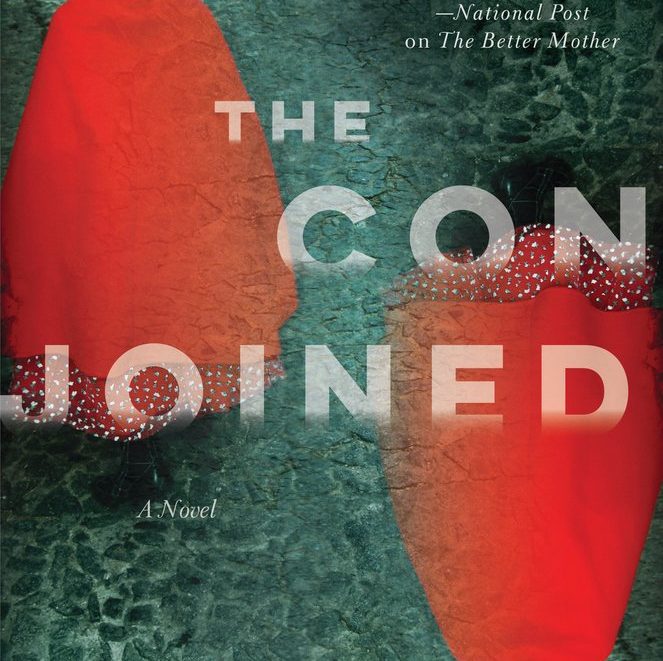
Review by Deborah Vail
The Conjoined
by Jen Sookfong Lee
ECW Press, 2016
A Vancouver-based writer born and raised on the city’s Downtown Eastside, Jen Sookfong Lee coaxes her readers down the frightening alleys and street corners of this marginalized area notorious for illegal drugs and poverty. She describes it as a place,
“where human misery had snowballed so that vomit and shit and dirty sexual favours in exchange for drugs seemed normal…” (56)
She contrasts this plagued area with descriptions of a middle-class neighbourhood in North Vancouver where the houses are marked with “tidy rows of heather and rhododendrons.” (3) It is here two foster girls from the Downtown Eastside, Jamie and Casey Cheng, are placed when Social Services deems their mother unfit. It is here in a reputable foster home where their bodies are discovered twenty-eight years later at the bottom of two freezer chests. The main suspect: the foster mother who reported them missing so long ago.
We meet the foster mother’s biological daughter, Jessica Campbell, as she is cleaning out her recently deceased mother’s home and makes the shocking discovery. Her initial reaction to finding the bodies is physical. … “she felt a creeping, numbing dread tickling its way through her body, core to limbs.” (13)
Jessica is flooded with memories of her challenging foster sisters who had so briefly occupied the bedroom across the hall from hers when she was ten years old.
“They were beautiful, the two of them, but it was Casey, the older one, who had eyes that were long and still, whose face was shaped as if it had been drawn with a fine-nibbed pen. Jamie was cute, but Casey made Jessica want to run away and hide under a guilt, ashamed by her huge curly hair her ungainly height. If I could, she thought, I would peel that face right off her and press it down over mine.” (20)
Haunting memories of the dead girls coupled with her mother’s recent death pushes Jessica into a state of emotional unbalance.
“She felt as if she were standing at the top of a high, high hill, and the only way to get down was to hurtle herself toward the steepest side as fast as she could, feet stumbling and rolling and tripping as she went.” (49,50)
Struggling to cope, Jessica looks to the past for answers. Desperate to understand who Casey and Jamie were beyond the words social workers would have used to describe them, “at risk, behaviorally challenged, victims,” (260) she sets out to speak with their mother. The mother has spent decades entrenched in her own unsurmountable sorrow over the disappearance of her daughters. During their icy encounter, the mother asks,
““Did she kill them? Do you think your mother did it?”
Jessica could swear she felt her mother’s curls brushing her cheek then, but when she reached up to brush them away, she felt tears instead. Fuck-you, Mom, she thought. Fuck you for making me do this.” (199)
As Jessica sinks deeper and deeper into despair her search for answers turns inward. She questions every choice she has ever made especially her choice to become a social worker, one of the few things that won her mother’s approval. Now in her late thirties, childless and burned out, she takes stock of the heavy toll this career choice has taken.
“The weight of saving children or, at the very least, keeping them from harm, pushed down on her shoulders until she thought she could no longer walk or stand or even sit upright.” (107)
Her disillusionment doesn’t stop with her career. Her relationship with a man described as a “tasteless glass of skimmed milk”, (104) becomes claustrophobic and deeply unsatisfying.
“… if she lived with a real man, one who knew how to fix a garbage disposal and carved animals out of wood, she would be sitting down to a meal of steak and good red wine and listening to classic rock. Instead, she had Trevor, soy cheese and Bon Iver.” (90)
Like Venn diagrams overlapping and conjoining in surprising ways, Jessica seeks the story of her mother’s life and the lives of the sisters.
“Jessica whispered, “I love you, Mom.”
Donna nodded and said, “I was never perfect but you’ll want to remember me that way. You have my permission to think about how much I annoyed you too.” She laughed quietly and soon fell asleep, breath slow and quiet in the evening sun. What did that mother, the one Jessica thought she remembered, have to do with the two bodies in the freezers?” (19)
A theory about Jessica’s mother and the murdered girls takes shape that is both believable and surprisingly forgivable.
When writing about such heinous crimes, Jen Sookfong Lee avoids sensationalism. She remains focused on her characters, their guilt, suffering and resilience. You get the feeling that Lee sets them free and then watches them survive to the best of their abilities.
“From now on, when Jessica thought of her mother, she would think of her as mashed up, asymmetrical, stuck all over with bits of hair, crumbs and seeds. She was everything she had ever touched or eaten or loved or despised. Like Jessica. Like everyone.” (260)
The Conjoined is about people who do their best, but still get tangled up in a world where fear dominates, life is not always fair, yet love survives. This fast-paced novel explores poverty, positions of power, grief and the all too common pain inflicted by those we love the most. Husbands who are too busy to notice, fathers who are supposed to protect, mothers who are too controlling and grandmothers who cannot forgive, all make up Lee’s cast of memorable characters in this heartfelt story of lives lived and lost.
Deborah Vail writes fiction and creative non-fiction. She is currently pursuing her MFA through the Optional Residency Program at UBC.